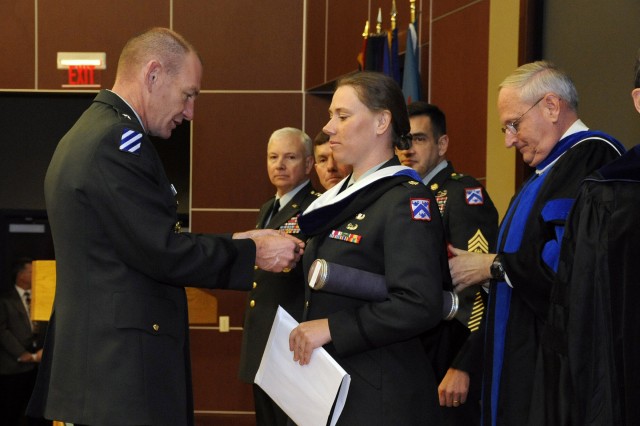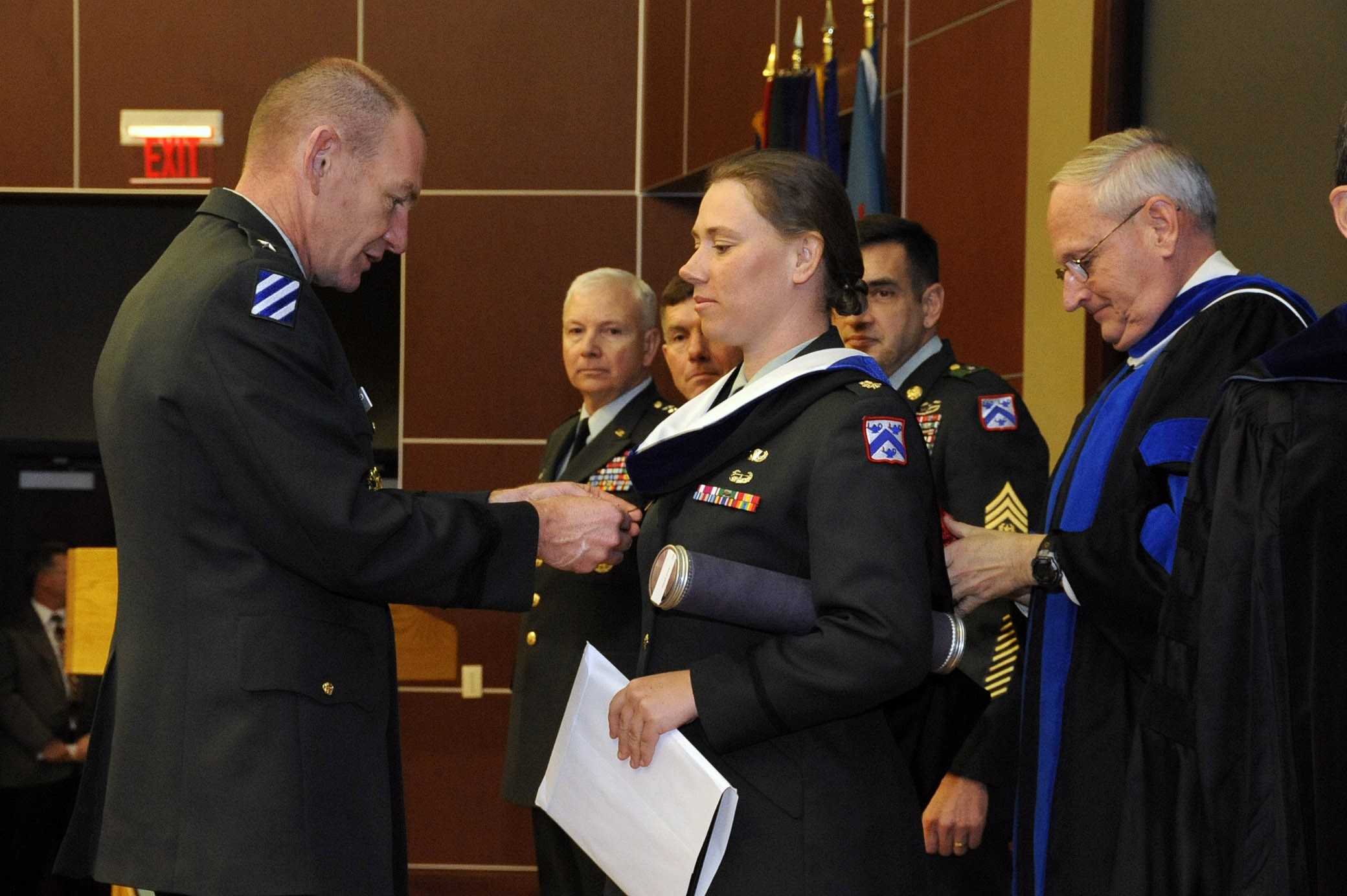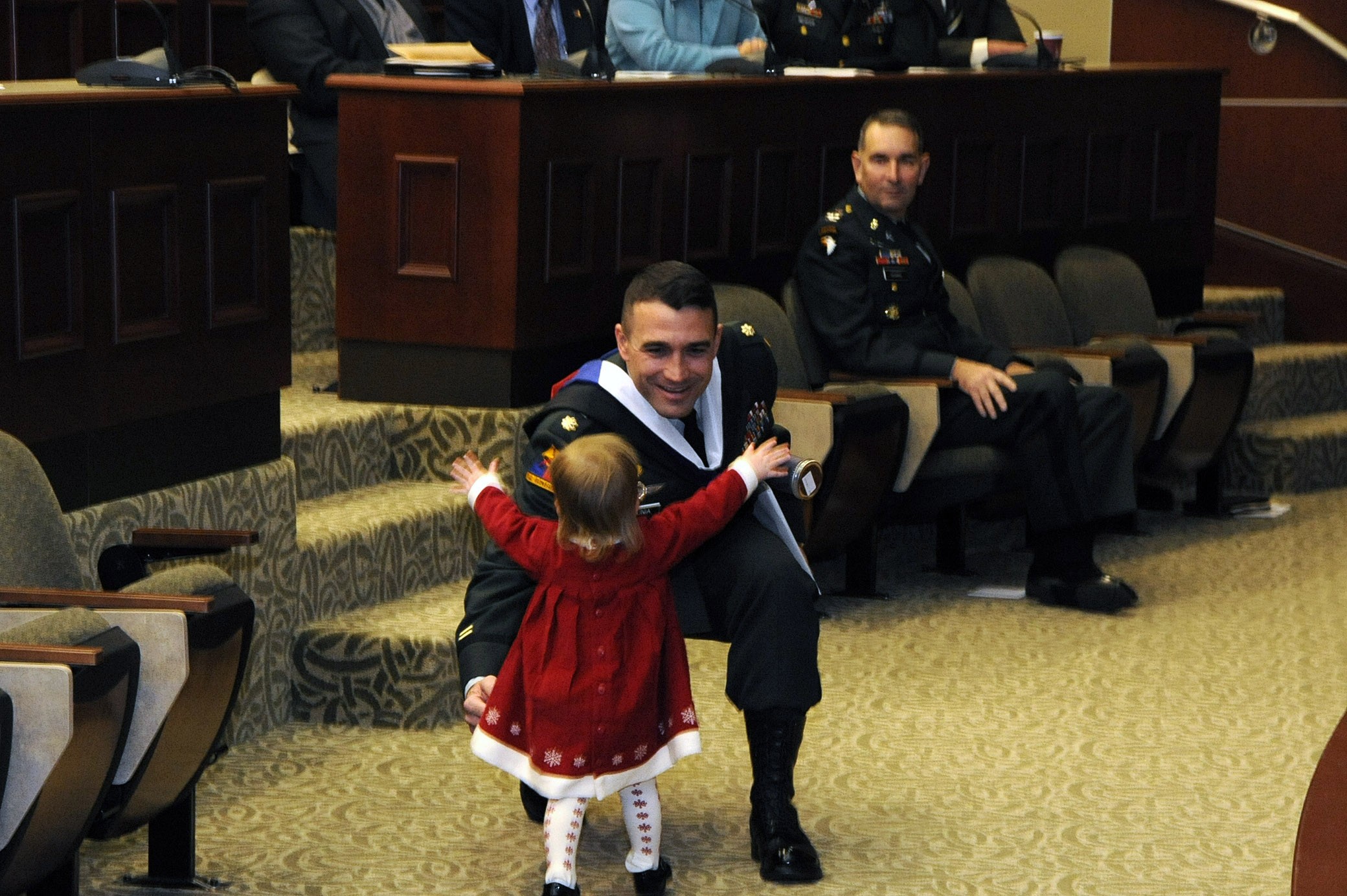FORT LEAVENWORTH, Kan. (Dec. 8, 2008) -- The Army's School of Advanced Military Studies at Fort Leavenworth graduated 16 officers Dec. 5 in its first "off-cycle" class.
The off-cycle class of the Advanced Military Studies Program is part of a 53-percent growth and expansion within SAMS to better support the growing needs of the Army and its deployment and force-generation requirements, said officials at Combined Arms Center.
Despite a misperception of some to view the off-cycle graduation as second-class, Col. Stefan Banach, director of the SAMS program, said "For the first time in our history, our Army has the flexibility to do an intellectual surge in a main effort theater of war, which is exactly what the army has chosen to do with this graduating class."
This class was also the first to complete the school's updated curriculum, Banach said, which incorporates an Art of Design course structured to develop the critical and creative thinking skills in officers to enable them to manage the complex problems across the security environment.
Guest speaker at Friday's graduation ceremony was Lt. Gen. William Webster, the deputy commander of U.S. Northern Command and vice commander of the U.S. Element, North American Aerospace Defense Command, headquartered at Peterson Air Force Base, Colo. Webster is a graduate of the program and the "last man standing" of the opening SAMS class in 1984.
Webster highlighted fundamental changes in the program and the security environment in his remarks to the students.
"We have to change the way we plan, and we've done that with adaptive planning, which allows you to take advantage of all the elements of the staff, of all the expertise, and to build plans that can be reviewed regularly and that can be changed to meet the changing situation," he said.
The 16 students focused their campaign design work on the Afghanistan region as their regional focus throughout their yearlong education. Upon graduation, eight of the sixteen students will deploy directly to Afghanistan and serve in senior leadership positions on Corps or combatant command staffs, directly leveraging their year of study and education while at SAMS.
"It's wonderful to be back here after nearly 25 years of wandering around the Army and seeing a class, the first class to graduate in the winter, this is wonderful because I know that the commanders out there are really expecting you to be ready, to roll up your sleeves and get back to work. Afghanistan is a very tough problem; and you know better than I do, and I'm sure you'll contribute greatly," Webster said.
SAMS is a subordinate organization to the Command and General Staff College, located at the Combined Arms Center, Fort Leavenworth, Kan. The AMSP is a one-year, graduate-level program that provides education in military art and science. The course focuses on the fields of theory and practical application for campaign design, national policy and strategy, strategic decision making, history, adaptive leadership and information operations to prepare officers to execute full-spectrum operations in joint, multinational, and interagency environments.




Social Sharing